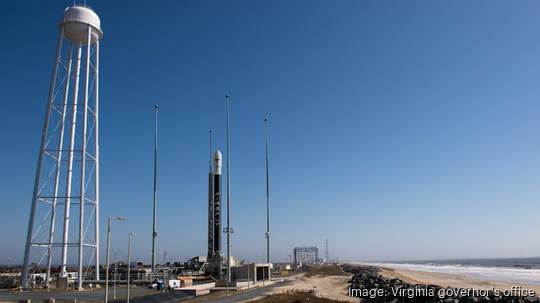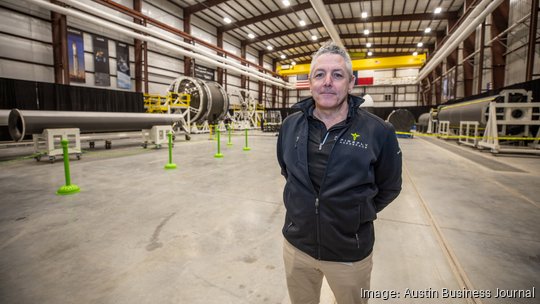
Firefly Aerospace Inc., a Cedar Park, Texas rocket company, is expanding to Virginia while nearing its next big countdown.
The company plans to send its next rocket into low Earth orbit as soon as Wednesday evening, launching from Vandenberg Space Force Base, which is about 65 miles north of Santa Barbara, California. The launch is currently scheduled for 11:03 p.m. CST, although launches are often delayed by weather or technical issues.
Firefly, a portfolio company of AE Industrial Partners, is also developing new launch capabilities at the Mid-Atlantic Regional Spaceport on Wallops Island, Virginia. The development will include a launch control center, horizontal integration facility and administrative office space on Virginia’s Eastern Shore, the governor's office announced.
That is expected to be ready for launches sometime next year, and it will be able to launch both the Alpha rocket and the Antares 330 and the Medium Launch Vehicle it is working on with Northrop Grumman. The site will also be able to accommodate rapid, on-demand launches, such as the demonstration it did as part of the Victus Nox mission, which required the company to launch a rocket with just 24 hours notice.
“Governor [Glenn] Youngkin and his teams at Virginia Spaceport Authority and the Virginia Innovation Partnership Corporation are great partners as we expand Firefly’s launch services for both Alpha and MLV," Firefly Aerospace CEO Bill Weber said in a statement. "Their support is enabling greater launch schedule flexibility while simultaneously creating new, high-tech jobs in Virginia.”
The Alpha Flight 5 set for this week will be the company's fifth launch, and it represents another critical test of its engineering and ability to deploy small satellites into orbit as part of a demo contract with NASA.
Firefly said the rocket will carry eight payloads that were picked through NASA’s CubeSat Launch Initiative.
Among the projects aboard the rocket are an inflatable antenna for high-speed communications developed by the University of Arizona, a cosmic ray detector created at the University of Kansas and data sensors and a camera made by nonprofit Teachers in Space that will send data back to Earth, allowing anyone with a ham radio to communicate with it.
“The Firefly team has rapidly matured our Alpha rocket and our responsive launch operations to deliver the dependable one-metric-ton rocket the market is demanding,” Weber said in a statement. “We’re proud to support this NASA mission that will not only prove out the capabilities of Alpha as a repeatable, reliable launch vehicle, but also advance our mission of making space for everyone by supporting some incredible student-led CubeSat initiatives.”
But before all those experiments can reach their potential, Firefly's rocket has to get them into orbit.

The company's first launch in 2021 ended in an explosion after the team on the ground decided to abort the mission after detecting an anomaly during first stage ascent. While it was a setback, it's common for aerospace companies to lose a few rockets, especially in early phases.
Firefly had its first successful rocket launch and satellite deployments in October 2022. That was followed by two more launches in September and December last year, both of which achieved some or all of the company's goals.
Earlier this year, the company showed off its expanding Rocket Ranch campus north of Cedar Park in Briggs, Texas. The expansion includes two new rocket testing stands and large robotic fiber placement machines to automatically build sections of the first stage of the engines it’s co-developing via a deal with Northrop Grumman.
This article has been updated to correct the start of the launch window.